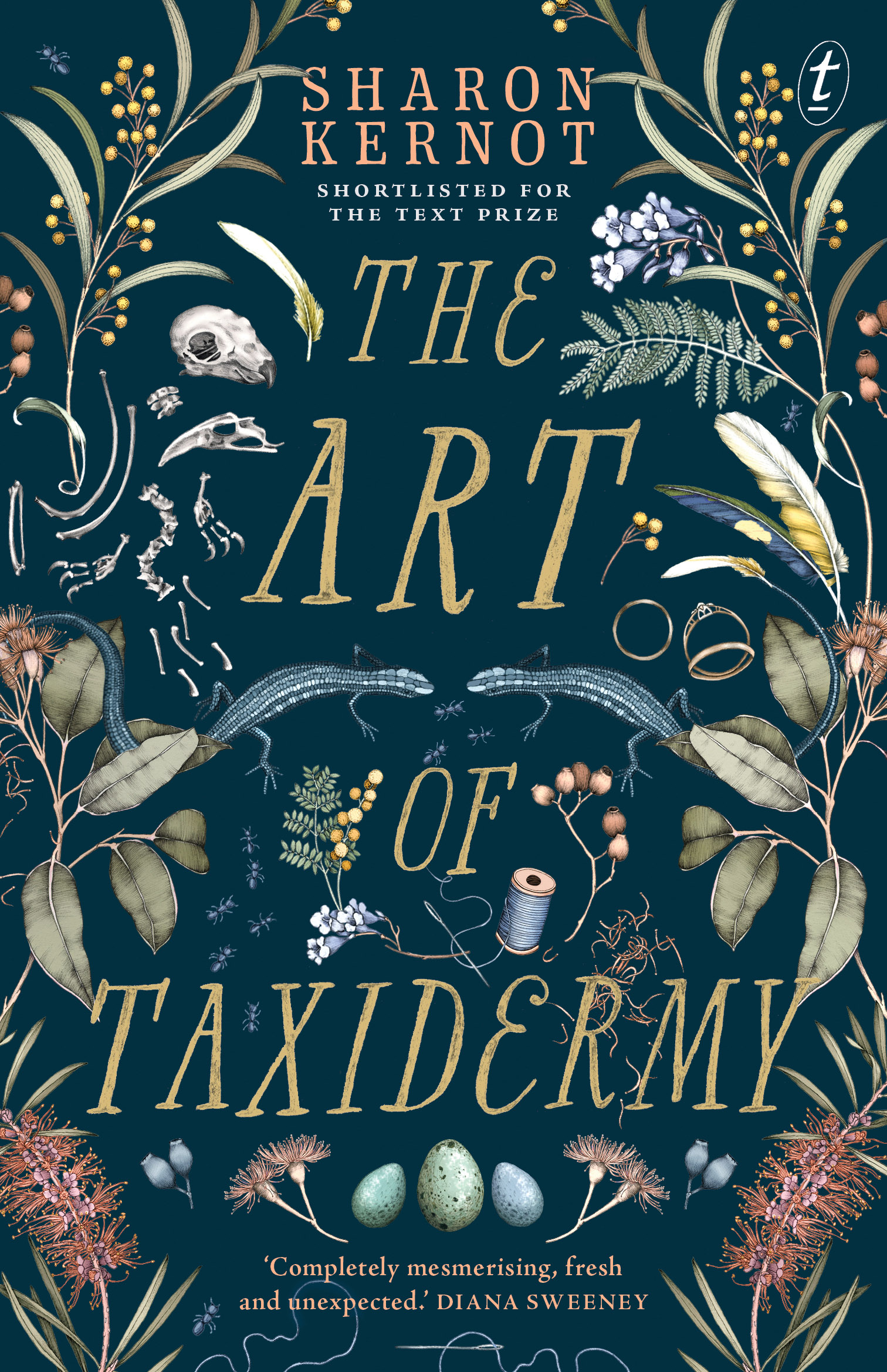
Author: Sharon Kernot Publisher: Text Publishing
Sharon Kernot’s verse novel, The Art of Taxidermy, is an exquisite, profoundly moving story of grief, loss and love and family.
The Art of Taxidermy is a beautiful verse novel that is set in a small country town in the 1960s. Kernot explores the theme of grief through her character, thirteen-year-old Lottie, who has experienced a great deal of death in her short life, including the loss of her mother. As the book unravels, you learn more about the losses that Lottie has experienced and you begin to understand why Lottie is so obsessed with death. Lottie’s way of grieving is unique – she collects dead animals and attempts to preserve them.
Lottie’s family has experienced significant losses and adversity. They are a German family living in post World War Two South Australia and one thread of the narrative is how members of the family were imprisoned in the Loveday Internment Camp during the war. Lottie’s family were considered enemies during this time and as such experienced great difficulties and hardships.
Lottie lives with her father, Wolfgang, who is gentle and kind-hearted, but he’s busy with work and he’s also distracted with his own grief. Her aunt Hilda lives nearby and helps Lottie’s father in the raising of Lottie. Aunt Hilda is a practical woman and she doesn’t understand why Lottie or her father cannot just move on with their lives. She doesn’t understand why they are both haunted by their losses.
The novel takes place in the 1960s and it is a time when people didn’t talk to children about death and dying. Lottie is confused and has been left to find her own way to understand what has happened to her family and to comprehend why she feels the way she does. No one is giving her advice or support, so she turns to taxidermy because that helps and gives her a place to understand her grief.
The reasons for Lottie’s desire to express her grief through taxidermy are evident.
I wanted flesh and blood, not ghosts.
Lottie’s father, a scientist, is accepting of her interests. Aunt Hilda, though, finds it ghoulish and unladylike. Kernot does manage to add some dark humour from the Lottie and Aunt Hilda relationship. Aunt Hilda finds some bloody sheets from one of Lottie’s experiments and believes Lottie has started her period. Aunt Hilda is delighted with this turn of events and gives Lottie advice and menstrual pads. Lottie accordingly uses the cotton from the menstrual pads to stuff a lorikeet.
The artwork on the cover also needs to be mentioned – the delicate gumnuts, wattle and pale blue and green eggshells that fill the cover are stunning and add another layer to the connection to the Australian bushland which features heavily in this verse novel and almost becomes another character in the book.
The Art of Taxidermy is ideally suited to verse novel. The dark and strange subject of taxidermy is a perfect fit. Verse novels are challenging to write and not many people can write them well, but Kernot has created a masterpiece. Beautifully voiced, this narrative took my breath away. What I love about this book, though, is that Kernot in such a beautiful way reminds us that no matter how ugly things may seem, there is beauty around every corner and that we all don’t have to see beauty in the same way.

